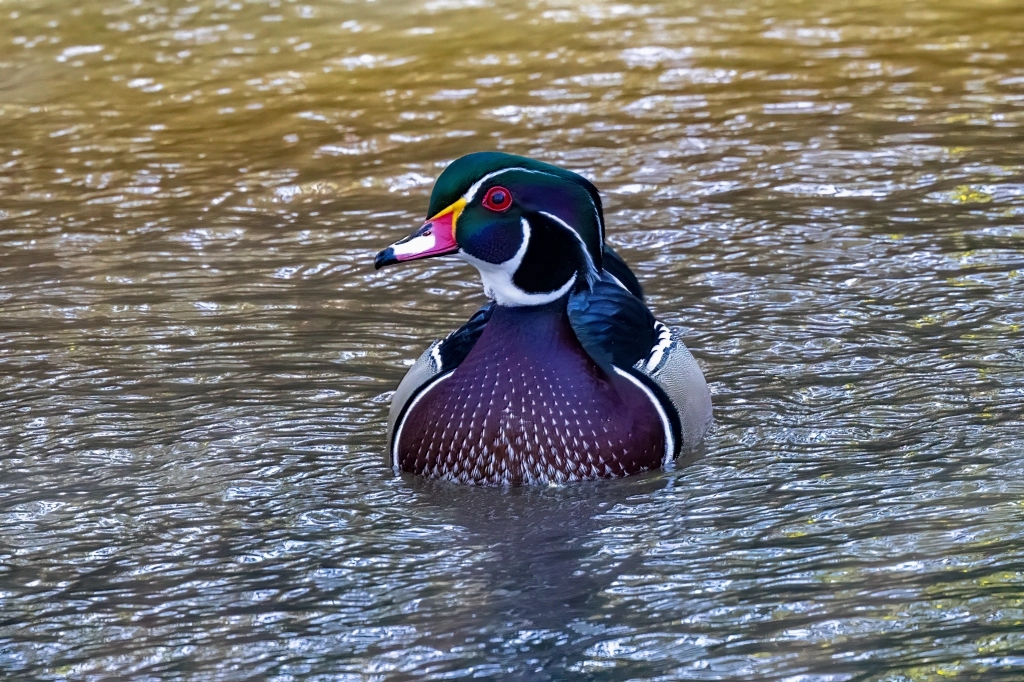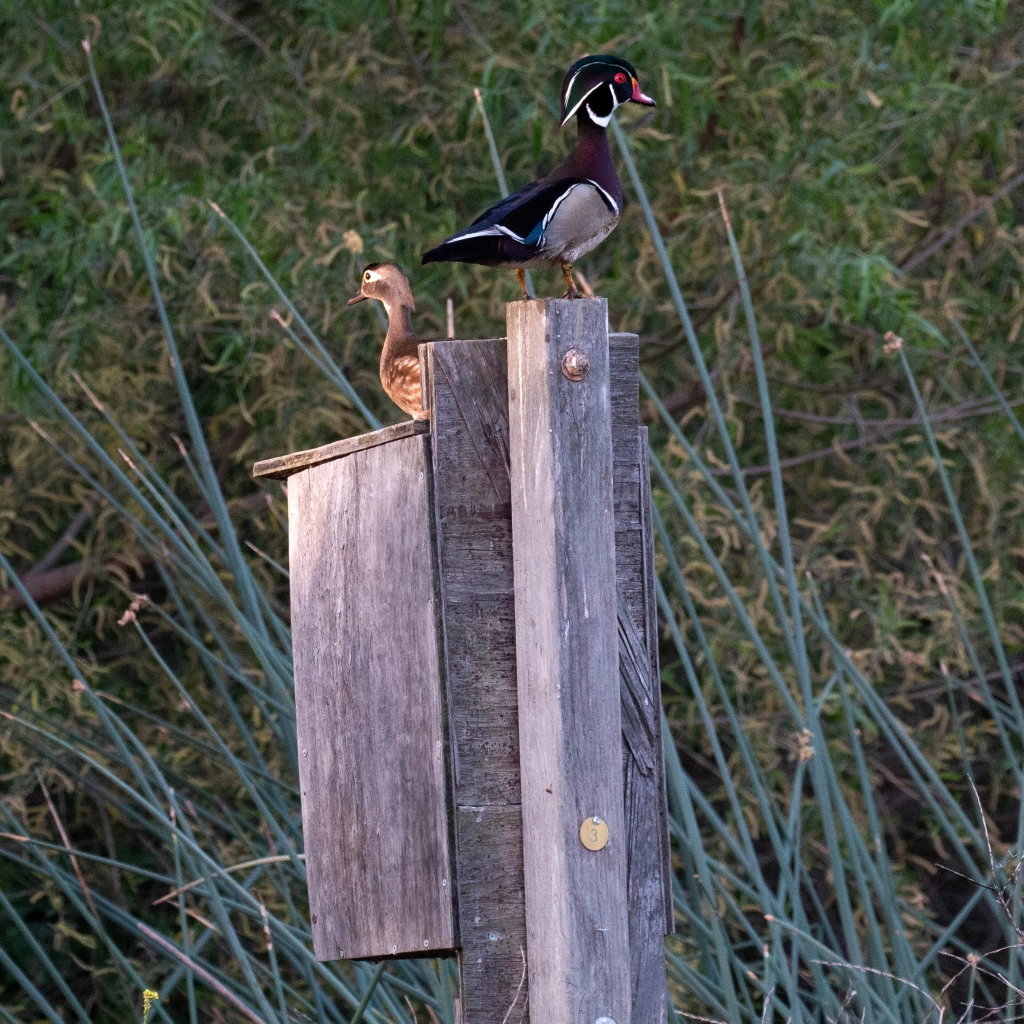The Wood Duck (Aix sponsa) is arguably the most spectacularly beautiful duck in the Central Valley. It is a Fairly Common Year-round Resident throughout the wetlands and waterways of the valley. Similar to other dabbling ducks, the Wood Duck is an omnivore with a broad diet of seeds, fruits, and aquatic and terrestrial invertebrates.
Appearance
Wood Ducks have a unique shape among ducks — a boxy, crested head, a thin neck, and a long, broad tail. In flight, they hold their head up high, sometimes bobbing it.
Like most waterfowl species, the wood duck is sexually dimorphic, with the males sporting a glossy green head cut with white stripes, a chestnut breast and buffy sides. Females are gray-brown with a white-speckled breast.
Distribution
Look for Wood Ducks in wooded swamps, marshes, streams, beaver ponds, and small lakes. They stick to wet areas with trees or extensive cattails.
Nesting
Wood Ducks nest in cavities in trees or in man made nest boxes and females may lay 9-14 eggs. The eggs are dull white to pale buff. Incubation is by the female only, 25-35 days. Ducklings remain in the nest until the morning after hatching. Clinging with sharp claws and bracing with tails, young climb to the cavity entrance and jump to ground. Young are tended by females for 5-6 weeks. They are capable of flight at about 8-9 weeks.
Wood Duck Boxes
As a cavity nester, Wood Ducks take readily to nest boxes.
Informative web pages below are by Ducks Unlimited:




Good Morning, Jim
I am truly enjoying your series on our feathered neighbors. Your photography and accompanying descriptions move me to experience joy, and, to take a closer look at the lay of the land and water sources, to view, first hand, more friends.
I appreciate the other two links about uses for wood duck boxes, and, how to hand craft wood duck boxes. You have started my craft thoughts flowing. Thank you for that…
I look forward to learning more from you
Thank you for all you do to share your love for our wilderness and local sights..